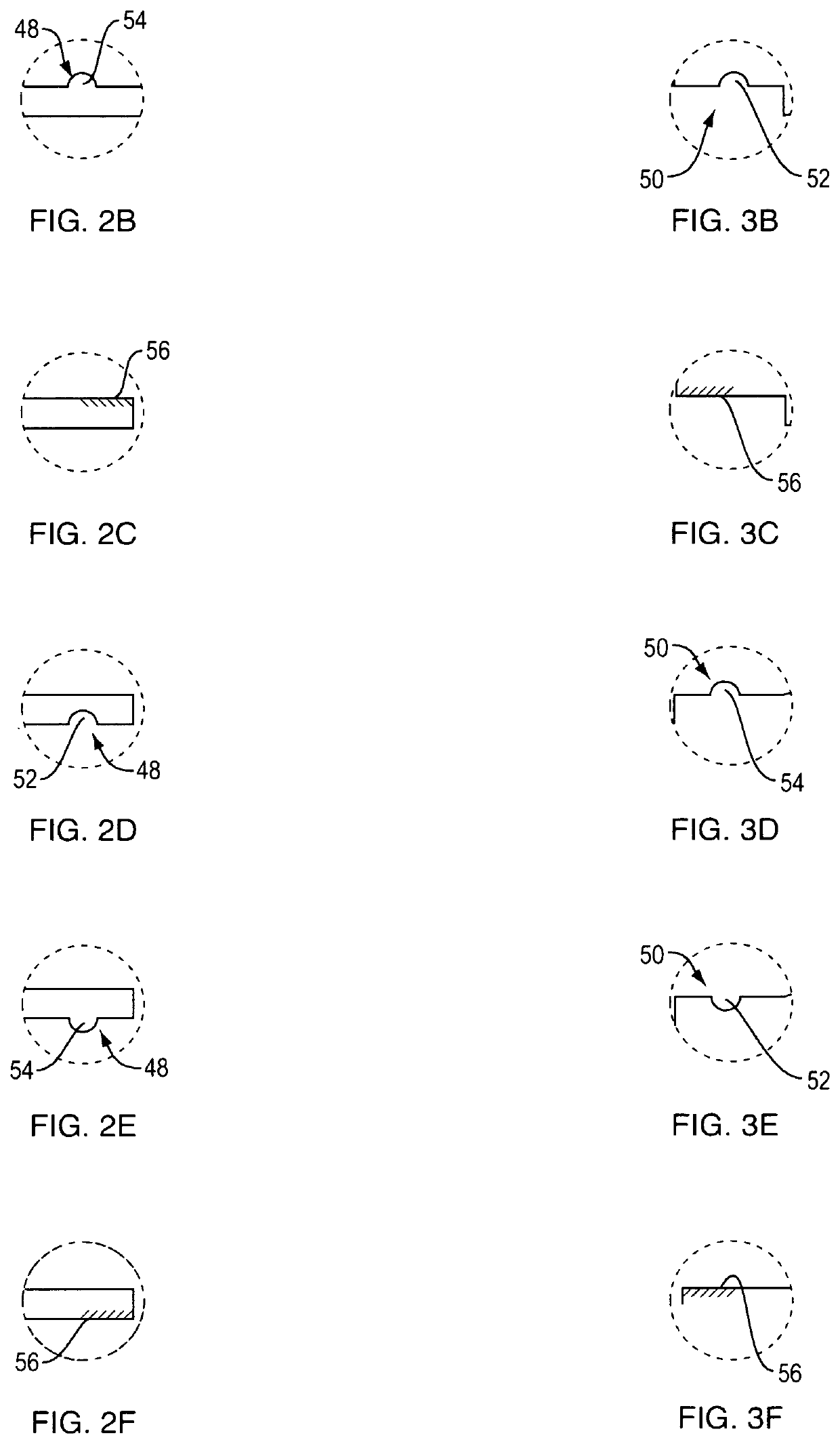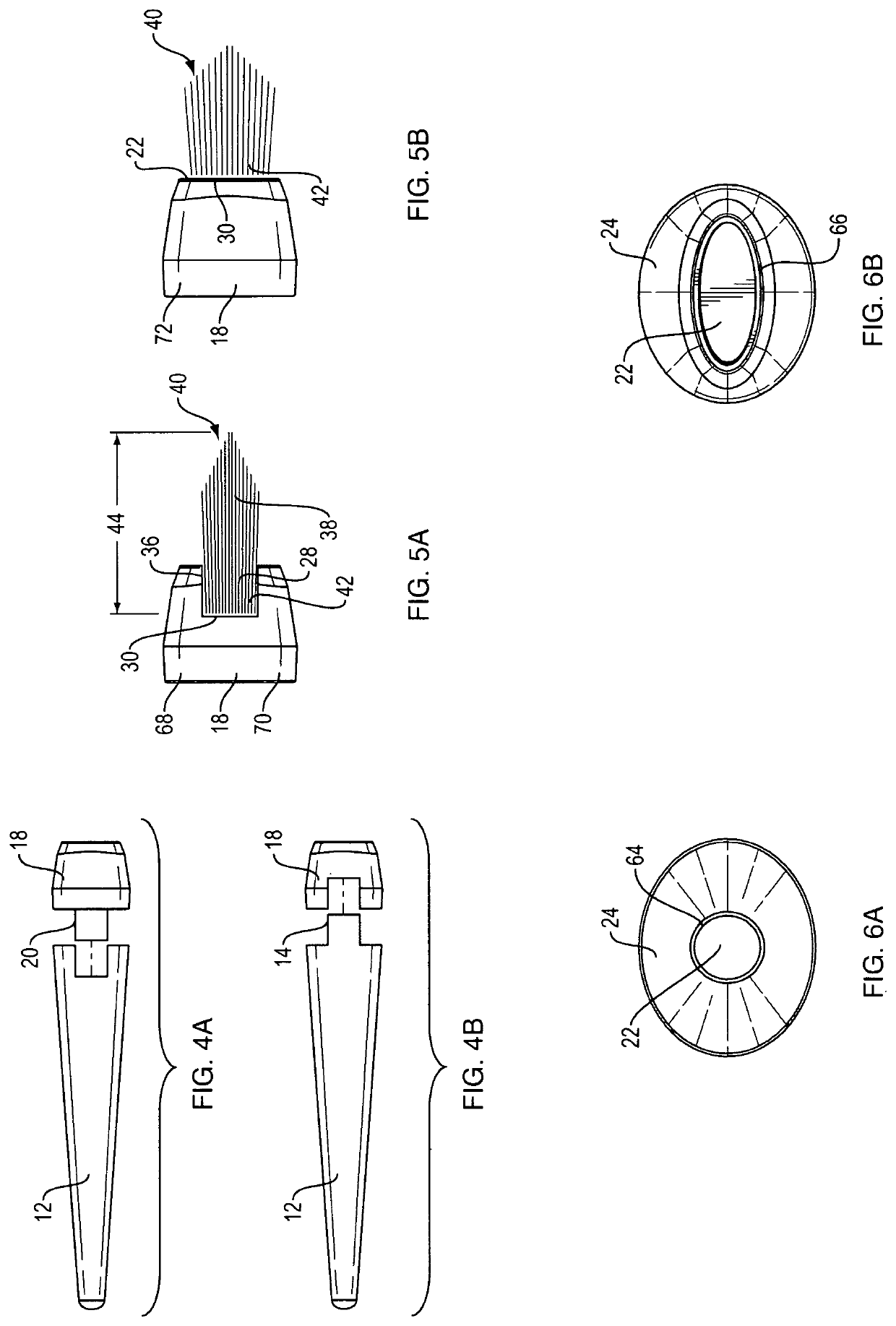Makeup Brush
a brush and make-up technology, applied in the field of cosmetic application technology, can solve the problems of brush bristles falling out during use, and not a complete solution, so as to facilitate the separation and connection of the ferrule, and be easily manipulated off the handle during releas
- Summary
- Abstract
- Description
- Claims
- Application Information
AI Technical Summary
Benefits of technology
Problems solved by technology
Method used
Image
Examples
Embodiment Construction
[0071]Referring first to FIG. 1, a side view of a makeup brush 10 of the present invention is provided. Makeup brush 10 includes handle 12 and ferrule 18. Handle 12 has ferrule end 14, where handle 12 connects to ferrule 18, and holding end 16, where a user will hold handle 12. Handle 12 preferably tapers 62 from ferrule end 14 to holding end 16 so that ferrule end 14 is wider than holding end 16. It is understood, however, that handle 12 may be uniform in width. Handle 12 may include cap 74 that covers ferrule end 14. Ferrule 18 includes ferrule inner end 20, which connects with ferrule end 14 of handle 12, and ferrule outer end 22, which faces away from handle 12. Ferrule 18 also includes ferrule body 24. Although shown more clearly in FIG. 2A, it is understood that ferrule body 24 has an interior 68 and well 28. Bristles 38 with bristle outer tips 40 extend from ferrule outer end 22. Throughout these FIGS., the discussion focuses on handle 12 and ferrule 18 being separate pieces ...
PUM
| Property | Measurement | Unit |
|---|---|---|
| length | aaaaa | aaaaa |
| sizes | aaaaa | aaaaa |
| perimeter | aaaaa | aaaaa |
Abstract
Description
Claims
Application Information
 Login to View More
Login to View More - R&D
- Intellectual Property
- Life Sciences
- Materials
- Tech Scout
- Unparalleled Data Quality
- Higher Quality Content
- 60% Fewer Hallucinations
Browse by: Latest US Patents, China's latest patents, Technical Efficacy Thesaurus, Application Domain, Technology Topic, Popular Technical Reports.
© 2025 PatSnap. All rights reserved.Legal|Privacy policy|Modern Slavery Act Transparency Statement|Sitemap|About US| Contact US: help@patsnap.com



